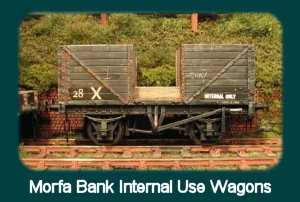*****************************************************************************************************************************************************************
Internal Use Rolling Stock
*****************************************************************************************************************************************************************
A selection of various items of rolling stock usually confined to works
and other private establishments, not for use on the BR network.

This is a trio of 3D printed hopper wagons representing different variants of the LMS
20 ton iron ore hopper with a 10'6" wheelbase. On the left is M691576 standard pattern
height, shorter LMS modified version in the middle, and extended sides version on the left.

Here we see the 14 completed wagons after some very heavy weathering using a whole host of
paints and military modelling products. Many of BSC’s fleet featured crudely painted yellow
identifying panels (usually with hand painted tonnage markings) and also the brake levers
were painted white. Although the numbering system was consistent the markings for each wagon
certainly were not so replicating the look of the fleet was a challenge.

Some examples of the 16-ton fleet – 1077 has a plated drop door, a reinforcing plate running
along the entire bottom edge and has also lost its end door. Replacement plates appeared to
have received only one coat of paint and this had soon vanished. Riveted 1007 has also lost
the drop doors and gained some plating but still has an end door.

Former hopper 2282 featured a host of lettering but, like 1013, had not gained tonnage
markings on the yellow panels. The latter has lost both side doors and top flaps plus
replacement ‘T’ sections to the door stanchions and additional fillets along the solebar.

Finally 1112 (once B37349) as described earlier has less modifications than most and also
featured rather less lettering than some. Sister 1044 (previously B577573 and condemned in
1965) is a Bachmann model and still retains the side door but sealed and riveted to an internal
plate. I’ve still a box of salvaged Airfix parts so, if I feel inspired, a few more may join
the rather battered fleet in the future...but I’m having a rest from rivets for a while now!

Steel Company of Wales internal box opens. These were acquired from Kyle Humphries (of Margam
Blast Furnace layout fame) and had been 3D printed a while back using an old spool printer.
With plenty of filling, sanding and priming and a liberal coating of rust they will prove
useful additions to the Morfa Bank fleet. One was modified with new ends based on photographs
I took at the plant in the early 1980s. These wagons took a tremendous beating but were
well-built (this batch was built by Cambrian Wagon in Cardiff during the late 1950s following
an earlier batch from Head Wrightson).

These are both Alastair Clarke white metal kits. Heavily weathered, they are used on
skimming and slag traffic from the foundry to a tip alongside the AW&T.
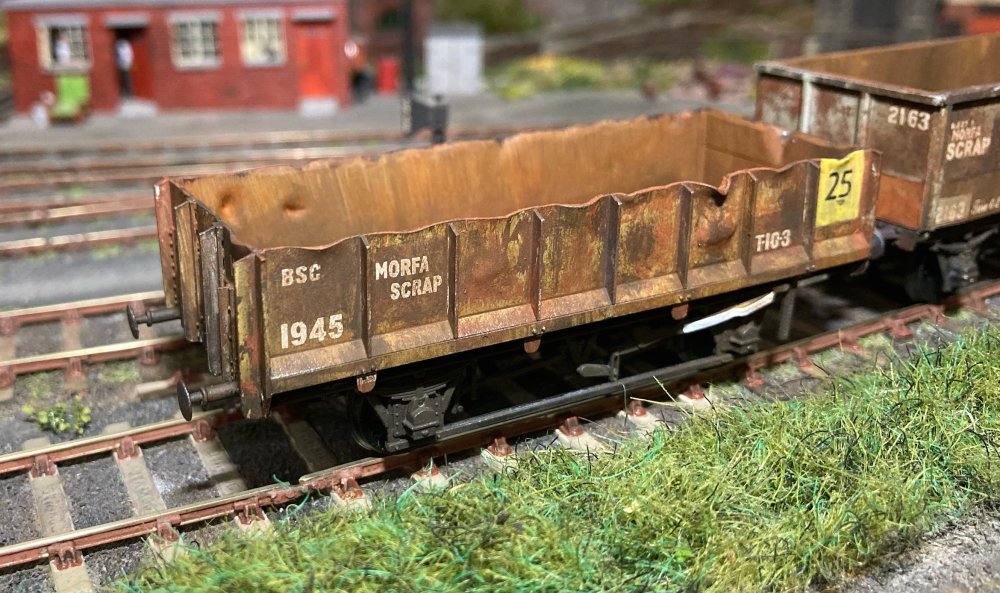
This one had started life as some species of GWR ballast wagon but seems to have been rebuilt
once and then again. It was latterly carrying old coils but has now been relegated to the scrap
flow from Knills. As a basis the rather nice Chivers kit for the GWR Tunny ballast wagon was
used, along with the ends, suitably modified. New sides have just been added.

This unusual beast was built out of necessity. The curve from the exchange sidings to the
tramway line was always very tight. It was fine with short wheelbase wagons but with some of
the longer wagons used on the steel export traffic and the vans that occasionally appear it
was found that buffer locking was an issue. This is the solution - fitted with dumb buffers
at one end and a wheel-operated brake inside for the shunter, the wagon is used between the
long wagons and the engine, solving the problem.

When looking for the Ratio wagon above I found an old ABS metal kit for an early LMS van. A
very well designed kit with some lovely fine detail so built exactly as intended and now in
use as a sheet van, taking the sheets used on the export coils back to the steelworks as required.

As a result of the card system I realised that the workings from the steel works over
the BR lines to Morfa Bank should have a brake van. So a very old Parkside LNE kit was
dug out of the stash (when I say very old it had a £2.00 price sticker on it!) and built
with a few ‘steelworks’ mods to the bodywork.
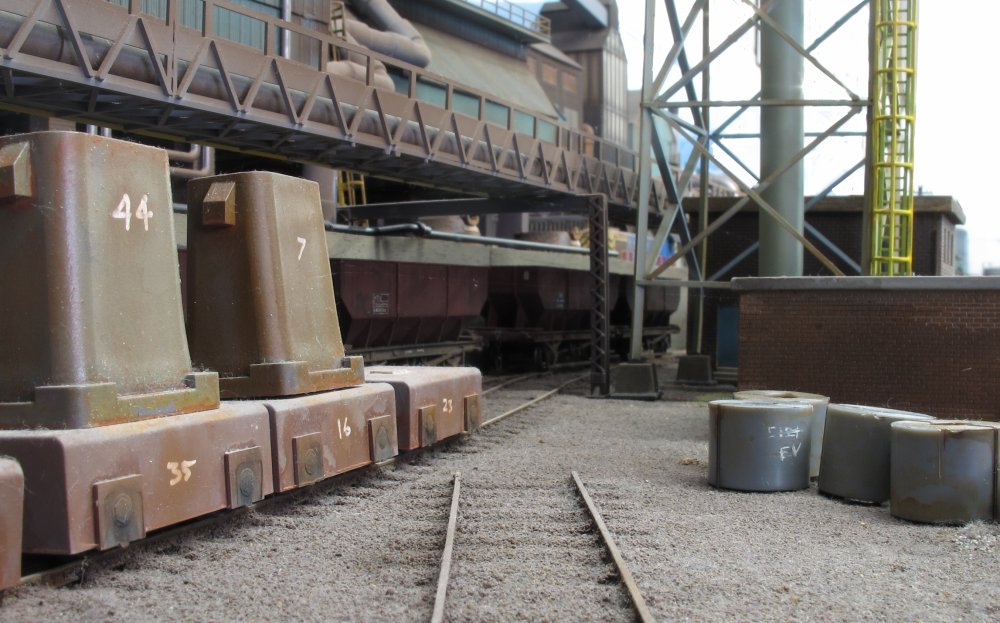
Ingot mould carriers at BSC Shenston Works ready for the next job.

3D printed ingot mould carrying wagons, AKA Panzers.
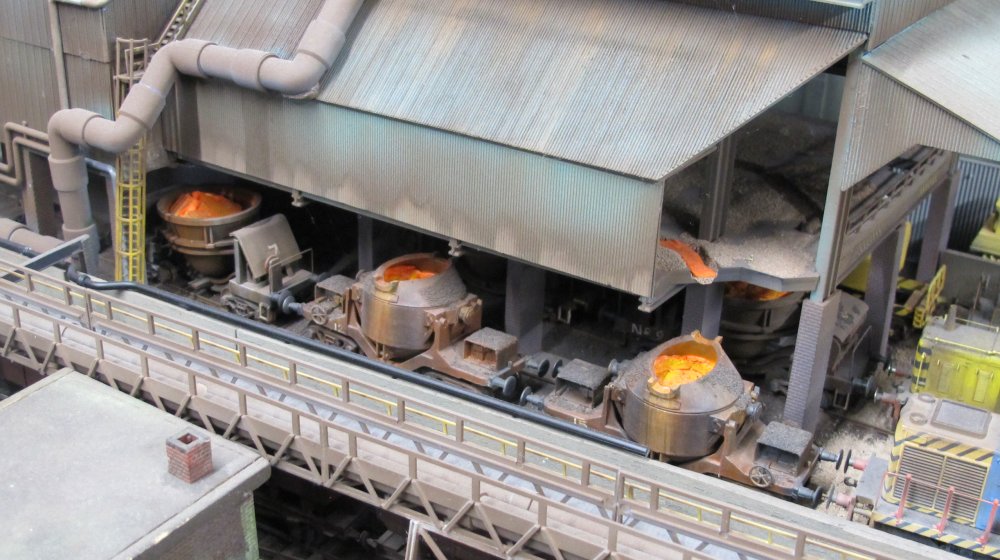
Molten steel carrying wagons ready for transit to be processed in another part of the plant.
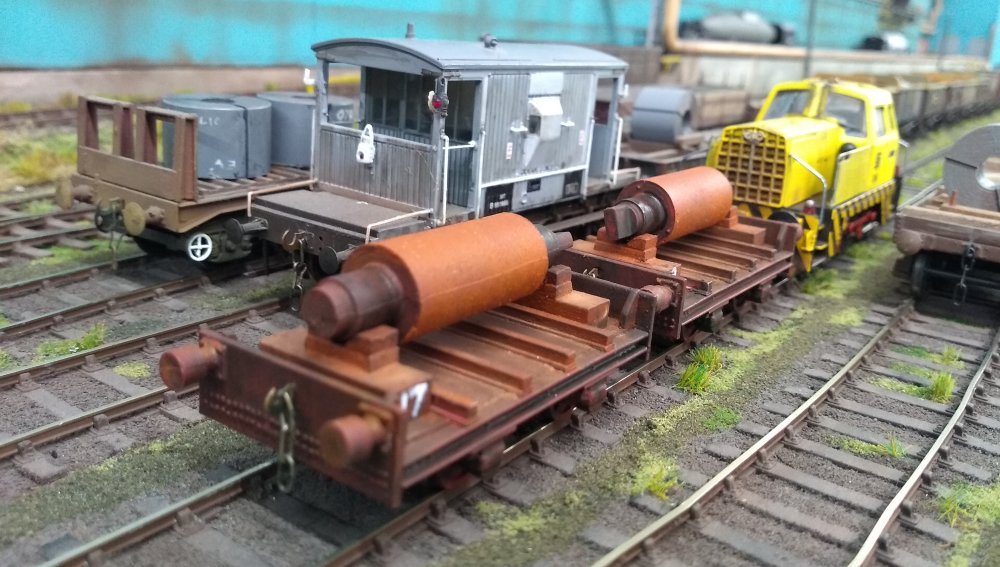
Spotted in the exchange sidings are a pair of Clark Kits 4SWK001A Industrial Skinningrove Open
Hearth wagons being shunted by a Sentinel diesel loco. These are whitemetal kits and are used
at BSC Shenston Works for the transportation of mill rollers.
*****************************************************************************************************************************************************************
